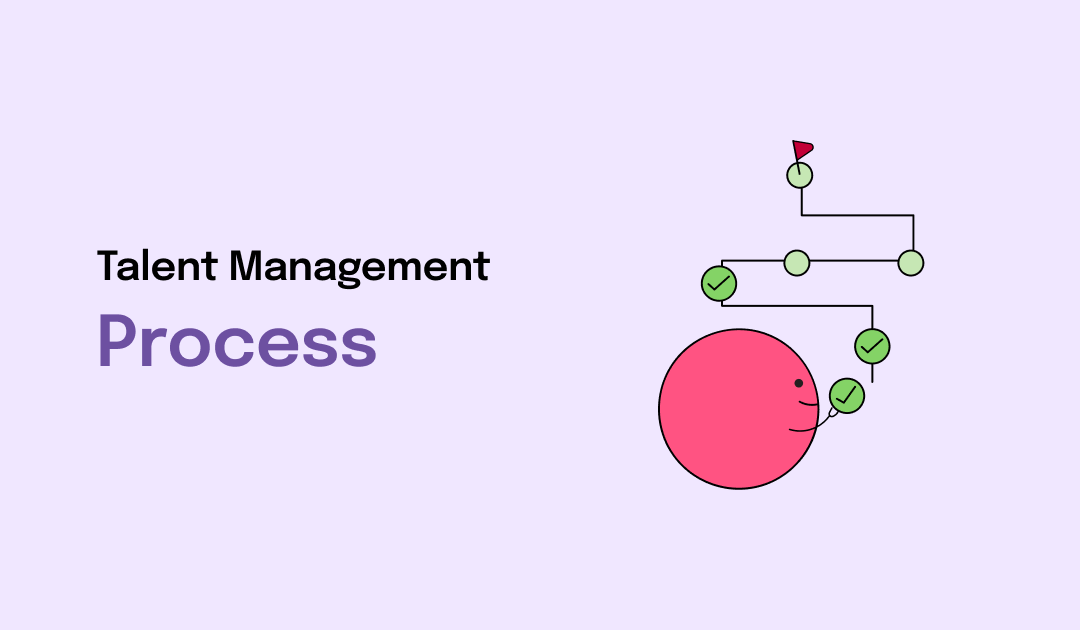The Ultimate Guide to the Talent Management Process
The Talent Management Process is a strategic approach that organizations use to attract, develop, and retain the best talent. It’s not just about hiring the right people; it’s about nurturing and managing them throughout their careers. In today’s highly competitive market, understanding the talent management lifecycle is crucial for any business aiming to maintain a skilled and engaged workforce. This guide will take you through the key steps in the talent management process, discuss best practices, and provide actionable insights on how to manage your talent pipeline effectively.
What is the Talent Management Process?
The Talent Management Process is a comprehensive framework that encompasses various strategies to recruit, develop, and retain talent within an organization. It involves more than just filling vacancies; it’s about building a workforce that is aligned with your business goals and equipped to meet future challenges. Unlike other HR functions, talent management focuses on the entire employee journey, ensuring that every stage—from onboarding to succession planning—is optimized to drive performance and engagement.
Talent Management in Corporate Settings often involves a more structured approach, integrating technology, data-driven decision-making, and continuous feedback mechanisms to enhance employee experience. By implementing an effective talent management strategy, companies can not only improve their overall performance but also foster a culture of growth and innovation.
Key Benefits of Talent Management
Implementing a structured Talent Management Process offers multiple advantages that contribute to long-term business success:
- Improved Employee Engagement and Productivity: When employees feel valued and see a clear path for growth, their engagement and productivity increase significantly. This positive environment reduces absenteeism and boosts overall company morale.
- Succession Planning for Critical Positions: A well-managed talent pipeline ensures that your organization is prepared for future leadership changes. By identifying high-potential employees early on, you can provide targeted development opportunities that prepare them for key roles.
- Enhanced Retention Rates: Talent Retention and Management Strategies help reduce turnover rates by creating a supportive work environment that meets employee needs. Retaining talent not only saves recruitment costs but also preserves organizational knowledge.
- Increased Organizational Agility: In a rapidly changing market, businesses need to adapt quickly. An effective Talent Management Process allows companies to pivot by having the right skills in place at the right time, thus ensuring business continuity.
Key Steps in the Talent Management Process
Managing the talent pipeline effectively involves a series of interconnected steps designed to attract, nurture, and retain employees. Here are the Key Steps in the Talent Management Process:
- Identify Talent Needs
This foundational step involves analyzing your current workforce and forecasting future needs. By understanding gaps in skills and aligning talent strategies with business objectives, you can proactively address your workforce requirements. - Recruitment and Attraction
Attracting the right talent requires a well-thought-out recruitment strategy. This includes crafting compelling job descriptions, promoting your employer brand, and using various channels to reach potential candidates. Recruitment is not just about filling a vacancy; it’s about bringing in individuals who will thrive within your company culture. - Selection and Hiring
The selection process goes beyond interviews. It involves assessments, skill tests, and reference checks to ensure candidates are the best fit for the role. Effective selection methods can significantly impact employee performance and long-term retention. - Onboarding and Integration
A well-structured onboarding program helps new hires adjust to their roles quickly, providing them with the necessary tools and knowledge to succeed. Onboarding sets the tone for the employee experience and plays a crucial role in long-term retention. - Performance Management
Performance management is about setting clear expectations, providing regular feedback, and identifying areas for improvement. By aligning individual goals with organizational objectives, companies can maximize employee contributions. - Development and Training
Continuous learning and development are at the heart of talent management. Providing opportunities for skill enhancement not only addresses current job requirements but also prepares employees for future roles. This step emphasizes Talent Acquisition and Development as ongoing processes that enhance both individual and organizational capabilities. - Succession Planning
This step ensures that your organization has a pool of qualified candidates ready to step into key roles when needed. Succession planning reduces the impact of sudden vacancies and ensures business continuity. - Retention and Engagement
Retaining top talent involves more than competitive salaries. Engagement strategies such as recognition programs, career progression opportunities, and a positive work environment are essential for keeping employees motivated and loyal.
Best Practices for Talent Management
- Personalized Development Plans
Understanding the unique needs and strengths of each employee allows for more targeted development efforts. Best Practices for Talent Management include creating personalized learning paths that focus on individual career aspirations and skill gaps. - Use Technology to Enhance the Talent Management Process
Leveraging tools like talent management software, AI-driven analytics, and talent marketplaces can streamline processes such as recruitment, performance reviews, and employee engagement. Technology helps in managing the talent pipeline more effectively by providing data-driven insights. - Create a Culture of Continuous Feedback
Moving away from annual performance reviews to a culture of ongoing feedback fosters open communication and trust. Regular check-ins help employees stay on track and feel supported in their roles. - Promote Internal Mobility
Encouraging internal promotions and lateral moves keeps employees engaged and reduces turnover. Internal mobility not only fills positions more quickly but also ensures that organizational knowledge is retained. - Align Talent Management with Business Goals
Talent management should be closely aligned with the overall business strategy. This alignment ensures that your workforce is equipped to meet current and future challenges, driving better business outcomes. - Focus on Diversity and Inclusion
Diverse teams are more innovative and perform better. Integrating diversity and inclusion into your talent management strategy ensures a broader range of perspectives and a more inclusive workplace culture.
Understanding the Talent Management Lifecycle
The Talent Management Lifecycle represents the entire journey of an employee within an organization, from their first interaction as a potential candidate to their development, retention, and eventual exit. Understanding this lifecycle helps businesses identify key touchpoints where they can improve the employee experience and increase engagement. By managing each stage effectively, companies can ensure they are not just hiring the best talent but also nurturing and retaining them for long-term success.
Conclusion
The Talent Management Process is an integral part of any successful organization’s strategy. By understanding the talent management lifecycle and implementing best practices, companies can build a strong, agile workforce that is prepared to meet both current and future challenges. A proactive approach to managing talent ensures that your organization not only attracts the best people but also keeps them engaged and performing at their best.
Call to Action: FocusU
Looking to transform your workforce through effective talent management? FocusU provides customized training solutions designed to enhance your team’s capabilities and performance. With tailored learning journeys, gamified solutions, and expert facilitation, FocusU helps your organization thrive. Explore FocusU’s offerings today and start optimizing your talent management strategy!
Frequently Asked Questions (FAQs)
Q1. What is the Talent Management Process?
The Talent Management Process is a holistic approach to managing employees throughout their career journey, focusing on recruitment, development, retention, and optimization of performance.
Q2. Why is Talent Management crucial for businesses?
Talent Management is essential as it helps companies maintain a competitive edge by ensuring that they have the right people with the right skills in the right roles, driving business success.
Q3. What are the Key Steps in the Talent Management Process?
The key steps include identifying talent needs, recruitment, selection, onboarding, performance management, development, succession planning, and retention.
Q4. How does Talent Management differ from Performance Management?
While performance management focuses specifically on assessing and improving employee performance, talent management encompasses the entire lifecycle of managing talent, including acquisition, development, and retention.
Q5. What are some Best Practices for Talent Management?
Best practices include personalized development plans, leveraging technology, fostering continuous feedback, promoting internal mobility, and aligning talent management with business goals.
Q6. How can businesses manage their Talent Pipeline effectively?
By proactively identifying talent needs, nurturing internal talent, and leveraging data analytics, businesses can maintain a healthy talent pipeline ready to meet future demands.
Q7. What role does technology play in Talent Management?
Technology enhances talent management by automating processes, providing data insights, and facilitating continuous learning and development through online platforms.
Q8. How can companies improve Talent Retention?
By offering growth opportunities, recognizing achievements, fostering a positive work environment, and providing competitive benefits, companies can enhance employee retention.




